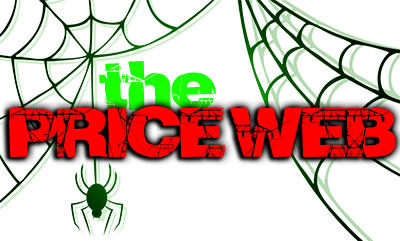
Welcome to this post around my latest DIY project…The Lightboard. For those of you who don’t know what a lightboard is, basically, it’s a piece of glass you draw on with neon dry erase markers while looking through it to your audience. This allows you to draw out what you’re talking about without having to turn your back to your viewers and creates a cool new way to teach! Yes, I can write this good backwards 😉 More on that later…
First, the original plan 🙂 (yes, there were a few lessons learned along the way…) The primary goal I had was to build this lightboard without consuming any more real estate in my home office. Sure, I could have built this on a stand-a-lone frame with caster wheels that could be rolled into my office whenever I needed to lightboard, but A.) that would mean this monstrosity would have to be stored somewhere…somewhere with space…and space is a hot commodity two kids later. B.) that would be too easy and no fun 🙂 So, I put my engineer hat on and got to work.
The first step in this process was to design a frame that would allow for the lightboard to become the new front of my desk while not in use then extend to eye-level when in use. This would mean that it would have to move both horizontally and vertically, all while supporting a moderately heavy sheet of glass. Desk drawer sliders to the rescue 🙂 The horizontal movement was easy, I just went to Home Depot and picked up 4 of the most beefy drawer sliders they sold (each supporting up to 100lbs). This would become the top and bottom sliding points to allow the lightboard frame to move horizontally enough to clear the desk top so it could then slide vertically. I also needed a way to secure this horizontal movement once fully extended. Nothing a couple of thumb screws couldn’t handle.
Now that the primary mechanism was in place to allow the whole frame to slide horizontally, it was time to start figuring out the best way to provide enough vertical movement to bring the glass eye-level while allowing it to collapse down and tuck nicely into the front of the desk. The first constraint I had was the overall dimensions of the front of the desk. This would mean, after accounting for the frame itself, I was left with a glass that could be 6′ wide by 2′ tall. In order to bring that 2′ tall glass up to eye-level, I had to get creative because that’s a lot of vertical movement to bring it up to eye-level of the average 6′ tall person 🙂 So, I designed a two-stage vertical movement mechanism consisting of two sets of locking desk drawer sliders which would allow this frame to extend vertically in two stages. This actually provides just enough vertical movement to bring the whole setup eye-level. See the example before the glass was in…

Now it was time to build the frame… This is where things got “fun.” First, I found the perfect way to nest a LED strip in the frame while creating the notch to hold the glass securely. It’s called a T-Bit and is designed for your router. It creates a notch like this…

As you can see, the wider part in the T is perfect to house the LED strip while the thin part in the T is equally perfect to house the glass panel securely. It is very important, as you might guess, to be accurate with your measurements and cut straight lines 🙂 Also you’ll want to check your depth to be sure you go deep into the wood enough to give the glass a secure mounting frame. Google working with router T-bits for more details here. Here is what it looked like before the glass was inserted..
The finishing touch was to stain and insert the LED strip and glass. But, before we get right to the final pics, a few lessons learned…
1.) Do not use plexiglass! I had an idea to use the plexiglass sheets you can easily pickup from Home Depot to cut costs & weight. The problem is, these sheets are not thick enough and also not clear enough to allow enough light to reflect inside. Further, because of their thickness, they aren’t very rigid, so there was too much flex when using. Lastly, because of the inefficient light reflection, it took a small miracle just to get the below effect, which was horrible! You can see how the effect was sort of working around the edges, but with tons and tons of glare. I scrapped the plexiglass sheet and simply had a 0.25″ thick piece of regular glass cut at a local glass shop. Not only did that work 200% better, but also wound up being cheaper actually. Have a look at the plexiglass vs real glass below.

Before – Plexiglass 
After – Real Glass
2.) Be VERY careful with the LED strips! Man, these things are super delicate, a very hard & expensive lesson to learn. Once you are ready to fish them through your T-channel, be cautious around bends and very slow & patient. The LED strips only bend at certain points, and generally aren’t even designed for 90 degree bends, so be careful your joints are not along an actual LED, but rather in between bulbs (and ideally where you can cut the strips as there is very little circuitry there).
3.) The last lesson I learned was around the locking drawer sliders I bought. I suppose the assumed knowledge that they would always be mounted parallel to the ground escaped me 🙂 What I mean by this is, the locking mechanisms that make them locking drawer sliders requires gravity to function properly by design. This works perfect if you mount the slides parallel to the ground the way they were intended to be mounted; however, once you go vertical, the locking mechanisms act like a pendulum on a clock, sometimes they would lock, other times, well, not so much. This posed a serious safety concern, especially once I switched from plexiglass over to real glass (plus two small children). So, I had to develop a locking mechanism. My first attempt was using some small springs to force tension one way to keep those locking pieces engaged; however, this proved futile as when the slides would close, this bent the springs causing them to become ineffective. The better design was using a little engineering, some wood & door hinges. I simply took 4 pieces of wood on hinges that would swing out and lock into place as the frame went vertical (each locking to the lower portion, and the bottom would lock securely against a 2×4). This provided a rock solid locking system that, once engaged, won’t allow for any accidents. I thought it turned out great. Have a look at my first attempt with springs and the new design with the wood pieces.

Before – Springs 
After – Wood Locks
Finally, the project was finished! The last piece of the puzzle was the technology setup.
1.) Camera: for the camera, I used my Logitech Brio 4k webcam as it has an exceptional wide-angle view with tons of calibration. This lets me dial in the color settings (contrast/brightness, exposure, hue, low-light, gain, etc..). This is crucial for getting the desired effect, so don’t cheap out on your camera.
2.) Backdrop: to achieve the effect, you’ll want this setup to be used in a dark room. For me, I simply installed a black curtain that I can draw closed when using and tuck away in the corner when not in use.
3.) Talent Light: because of the dark room effect, it’s also important to have sufficient light on the presenter behind the glass to illuminate their face. For me, a single LED strip was the solution. This provides adequate light on my face while not washing out the black background/effect.
4.) Microphone: remember, you will be behind a glass speaking, so any type of desktop mic you have isn’t going to work. The ideal setup here is a lavalier mic you can hard wire into your system to pickup good quality audio. They make wireless versions; however, for me, the one i’ll link to below works perfect as the cord is quite long and easy to use. *In the video I created, this was before I got my lavalier mic, so I was using a shotgun mic (only option at the time) so the video is not synonymous with the audio quality of the lavalier. It is MUCH better than the video below.
5.) Software: Ahh, the magic. I said I would get back to my amazing talent of writing backwards. Obviously I was joking. This is where Open Broadcaster Software (OBS) comes in. You simply pipe in your webcam feed and flip it on the horizontal axis. This allows you to write normally and your viewers see it the way it was meant to be seen. The other VERY cool part of OBS is they provide a virtual camera plugin, which allows the OBS output feed to be seen by your OS as another webcam. This is very handy for WebEx, Skype, Teams, GoTo Webinar, or any other platform where you can turn on a Webcam stream. This enables you to leverage this new tool for LIVE streaming!
That’s All Folks! If you have any questions about the project, feel free to drop a comment. Here are some pics of the finished product, along with a video walk through. Enjoy!
Supplies Used
























